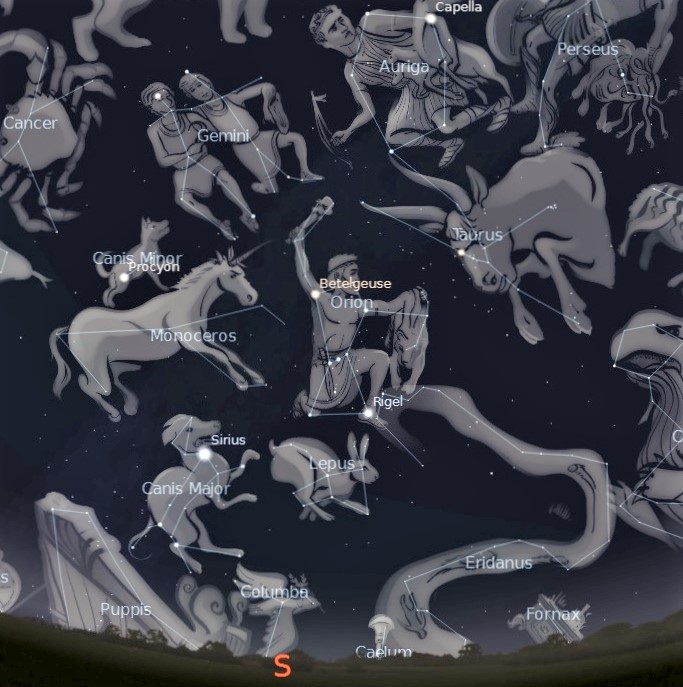This Week’s Sky at a Glance, 2022 September 24 – October 1 ~by Curt Nason
This is a good time of year to double your sky observing time. For the next several weeks, before we return to Standard Time, the sky is dark and the stars are blazing when most people are up to start their day, and it is not bitterly cold or snowbound. Orion and his dogs are prominent to the south, with Taurus, Auriga and Gemini arching over them.
In early evening you can see the 4th, 5th and 6th brightest stars. Look for yellow Arcturus sinking to the west, blue-white Vega overhead and Capella in Auriga rising in the northeast. Later, notice the positions of the circumpolar Big Dipper, Little Dipper and Cassiopeia. The next morning go outside and see how they have changed. Sometimes it is nice to have a little assurance that the world keeps right on turning.
This Week in the Solar System
Saturday’s sunrise in Moncton is at 7:08 am and sunset will occur at 7:12 pm, giving 12 hours, 4 minutes of daylight (7:13 am and 7:17 pm in Saint John). Next Saturday the Sun will rise at 7:17 am and set at 6:59 pm, giving 11 hours, 42 minutes of daylight (7:22 am and 7:04 pm in Saint John). On Sunday we are closest to equal daylight and night, with 12 hours, 58 seconds of daylight.
The new Moon phase occurs on Saturday, a time for observing galaxies, star clusters and nebulae which are known collectively as deep sky objects. Saturn is in the south at 10:30 pm, and about 7 degrees above it telescope users might see its deep sky lookalike, the planetary nebula NGC 7009, also called the Saturn Nebula. Jupiter is at opposition on Monday, making its closest approach to Earth in six decades. Mars has moved to about halfway between the V-shaped face of Taurus the Bull and its horn tips. Having just passed inferior conjunction, by Friday Mercury will be rising an hour before sunrise. Venus rises in bright twilight a half-hour before sunrise. This week and next, people in rural areas have an opportunity to spot the subtle wedge of zodiacal light in the east before morning twilight.
Public observing for the Kouchibouguac Fall Star Fest on September 23-24 has been cancelled due to forecast stormy weather. Public observing to celebrate Fall Astronomy Day is scheduled for October 1 at the Irving Nature Park in Saint John. Check the Facebook page for the park or the Saint John Astronomy Club website for details.
Questions? Contact Curt Nason.

